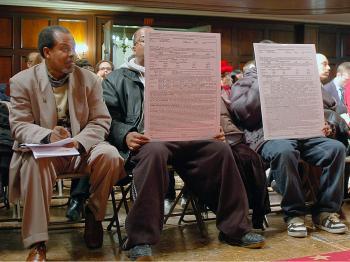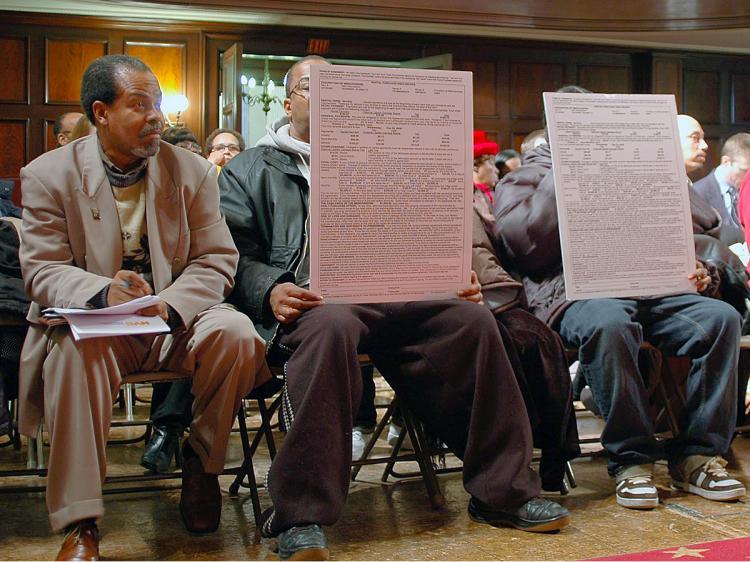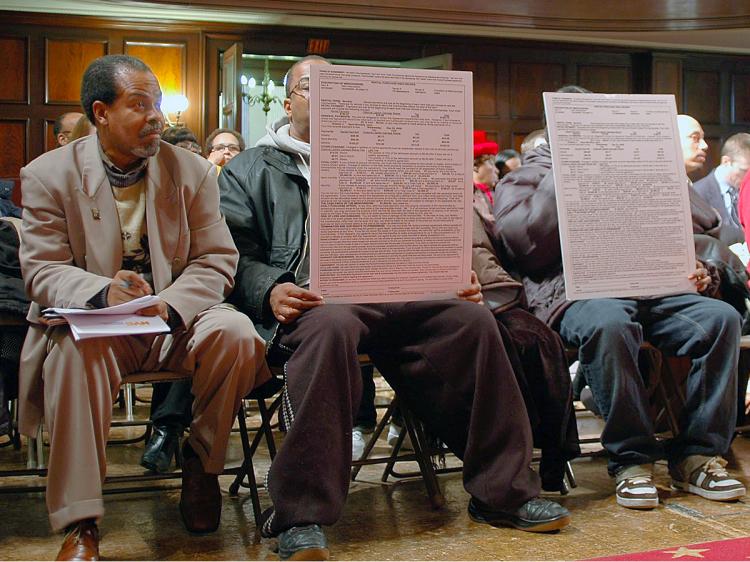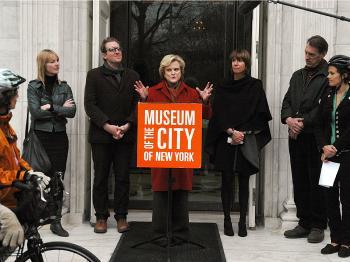The committees demanded the rent-to-own stores to print their contracts in everyday language that the average person can comprehend and to realistically price their items. The committees also want the stores to keep more comprehensive records of their transactions and the cost of the merchandise at the time of sale.
According to the report, the most frequent complaint against rent-to-own stores is the price markup on the products being leased. Sometimes the prices can be as much as three times the amount being charged at retailers.
Another complaint was that rent-to-own stores target ethnic groups with advertising and location placement.
The Neighborhood Economic Development Advocacy Project (NEDAP) alleges that rent-to-own stores are predominantly located in Black and Latino neighborhoods where many of the residents are on a fixed income. NEDAP claims that there are twice as many rent-to-own locations in poor neighborhoods and that 60 percent of their customers make less than $25,000 a year.
This means statistically that small print in the contracts being signed by the customers has a smaller chance of being read and/or comprehended. A Rent-A-Center (RAC) purchase agreement has tucked away in the small print “At any time, after the initial payment, you may acquire ownership of the merchandise by tendering an amount equal to the cash price of the merchandise minus 50% of all previous rental-purchase payments made.” It went on to say that items could be paid for in full within 90 days of the date of the contract signing by paying the cash price minus the amount of rental-purchase payments made.
“Somebody needs to go to jail, this is predatory lending,” said Council Member Charles Barron. “These are predators in our community. I believe this is racist … like we don’t have enough foreclosures now we got to get ripped off by some people that are making $6.8 billion dollars nationally. We need some kind of protection because this is ridiculous … setting poor people up when we’re already in an economic crisis. Now we gotta come here to figure out a way that we can stop folks from ripping us off, this is absurd.”
RAC Denies Allegations
A statement given by Xavier Dominicis, vice president of Public Affairs for RAC, claimed that profits remained comparable to other rent-to-own stores and retailers like Best Buy and Conn’s (an electronics retailer).
Dominicis argued that only 10 percent of RAC locations were in ethnic urban areas. The largest concentration of stores (25.7 percent) in suburbia, followed by the Urban Fringe (24.7 percent), Rustic America (21.2 percent), Midsize America (18.4 percent). “In each of the last four market segments” said Dominicis, “Non-Hispanic Whites make up more than 50 percent of the population. Accordingly, 90 percent of our stores are located in market segments that are generally over 50 percent white.”
Dominicis also argued that RAC paid its employees $11 per hour as a starting wage plus benefits; a living wage. He also said that the nationality of employees mirrored that of the residents living in the surrounding neighborhoods.
A statement issued by Jonathan Mintz, Commissioner of the Department of Consumer Affairs, read that the Rent-To-Own business rakes in 6.8 billion annually. This number jumped approximately 80 percent between 1995 and 2007 while the customer base grew only slightly from 2.7 to 3.0 million according to Mintz’s statement.
Dominicis said that customers knew of the increased prices and risk but, due to the convenience of the service, rented anyway. When asked why they didn’t want to make the contracts clearer, the rent-to-own store representatives had no comment.






Friends Read Free